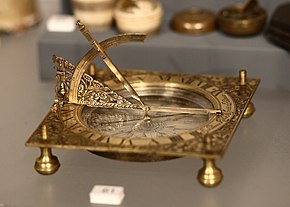
The Smithsonian Institution, or simply the Smithsonian, is a group of museums, education and research centers, the largest such complex in the world, created by the U.S. government "for the increase and diffusion of knowledge." Founded on August 10, 1846, it operates as a trust instrumentality and is not formally a part of any of the three branches of the federal government. The institution is named after its founding donor, British scientist James Smithson. It was originally organized as the United States National Museum, but that name ceased to exist administratively in 1967.

The Hunterian is a complex of museums located in and operated by the University of Glasgow in Glasgow, Scotland. It is the oldest museum in Scotland. It covers the Hunterian Museum, the Hunterian Art Gallery, the Mackintosh House, the Zoology Museum and the Anatomy Museum, which are all located in various buildings on the main campus of the university in the west end of Glasgow.

The Fashion Institute of Technology (FIT) is a public college under the State University of New York, in New York City. It focuses on art, business, design, mass communication, and technology connected to the fashion industry. It was founded in 1944.
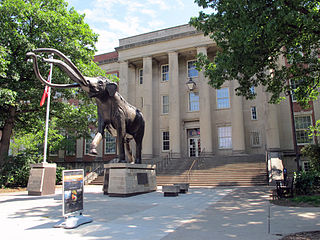
The University of Nebraska State Museum, also known as Morrill Hall, founded in 1871, is a natural history museum featuring Nebraska biodiversity, paleontology, and cultural diversity, located on the University of Nebraska–Lincoln City Campus near the corner of 14th and Vine Streets in Lincoln, Nebraska, United States. The museum houses Mueller Planetarium, a hands-on science discovery center, and the Elephant Hall, where visitors can see the world's largest articulated fossil mammoth among the collection of fossil elephants. Also featured are interactive paleontology exhibits, a dinosaur gallery, ancient life and evolution exhibits, wildlife dioramas, gems and minerals, American Indian and African exhibits, and a temporary exhibit gallery featuring rotating displays on diverse topics including photography, quilts and fine arts.

The Museum of Science (MoS) is a nature and science museum and indoor zoological establishment located in Science Park, a plot of land in Boston and Cambridge, Massachusetts, spanning the Charles River. Along with over 700 interactive exhibits, the museum features a number of live and interactive presentations throughout the building each day, along with scheduled film showings at the Charles Hayden Planetarium and the Mugar Omni Theater.

The Harvard University Science Center is Harvard University's main classroom and laboratory building for undergraduate science and mathematics, in addition to housing numerous other facilities and services. Located just north of Harvard Yard, the Science Center was built in 1972 and opened in 1973 after a design by Josep Lluís Sert, who was then dean of the Harvard Graduate School of Design.

The Carnegie Museum of Art is an art museum in the Oakland neighborhood of Pittsburgh, Pennsylvania. The museum was originally known as the Department of Fine Arts, Carnegie Institute and was formerly located at what is now the Main Branch of the Carnegie Library of Pittsburgh. The museum's first gallery was opened for public use on November 5, 1895. Over the years, the gallery vastly increased in size, with a new building on Forbes Avenue built in 1907. In 1963, the name was officially changed to Museum of Art, Carnegie Institute. The size of the gallery has tripled over time, and it was officially renamed in 1986 to "Carnegie Museum of Art" to indicate it clearly as one of the four Carnegie Museums.

The History of Science Museum in Broad Street, Oxford, England, holds a leading collection of scientific instruments from Middle Ages to the 19th century. The museum building is also known as the Old Ashmolean Building to distinguish it from the newer Ashmolean Museum building completed in 1894. The museum was built in 1683, and it is the world's oldest surviving purpose-built museum.
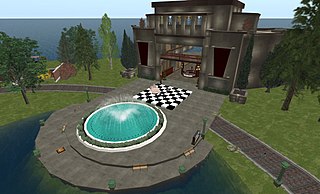
A virtual museum is a digital entity that draws on the characteristics of a museum, in order to complement, enhance, or augment the museum experience through personalization, interactivity, and richness of content. Virtual museums can perform as the digital footprint of a physical museum, or can act independently, while maintaining the authoritative status as bestowed by the International Council of Museums (ICOM) in its definition of a museum. In tandem with the ICOM mission of a physical museum, the virtual museum is also committed to public access; to both the knowledge systems embedded in the collections and the systematic, and coherent organization of their display, as well as to their long-term preservation. As with a traditional museum, a virtual museum can be designed around specific objects, or can consist of online exhibitions created from primary or secondary resources. Moreover, a virtual museum can refer to the mobile or World Wide Web offerings of traditional museums ; or can be born digital content such as, 3D environments, net art, virtual reality and digital art. Often, discussed in conjunction with other cultural institutions, a museum by definition, is essentially separate from its sister institutions such as a library or an archive. Virtual museums are usually, but not exclusively delivered electronically when they are denoted as online museums, hypermuseum, digital museum, cybermuseums or web museums.

Museo Galileo is located in Florence, Italy, in Piazza dei Giudici, along the River Arno and close to the Uffizi Gallery. The museum, dedicated to astronomer and scientist Galileo Galilei, is housed in Palazzo Castellani, an 11th-century building which was then known as the Castello d'Altafronte.
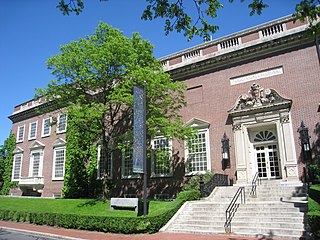
The Harvard Art Museums are part of Harvard University and comprise three museums: the Fogg Museum, the Busch-Reisinger Museum, and the Arthur M. Sackler Museum, and four research centers: the Archaeological Exploration of Sardis, the Center for the Technical Study of Modern Art, the Harvard Art Museums Archives, and the Straus Center for Conservation and Technical Studies. The three museums that constitute the Harvard Art Museums were initially integrated into a single institution under the name Harvard University Art Museums in 1983. The word "University" was dropped from the institutional name in 2008.

The MIT Museum, founded in 1971, is part of the Massachusetts Institute of Technology in Cambridge, Massachusetts. It hosts collections of holography, technology-related artworks, artificial intelligence, architecture, robotics, maritime history, and the history of MIT. Its holography collection of 1800 pieces is the largest in the world, though only a few selections from it are usually exhibited. As of 2023, works by the kinetic artist Arthur Ganson were the largest long-running displays; in 2024 they were replaced by a newer art installation, but some of Ganson's works were reinstalled elsewhere in the museum. There is a regular program of temporary special exhibitions, often on the intersections of art and technology.

The Harvard Museum of Natural History (HMNH) is a natural history museum housed in the University Museum Building, located on the campus of Harvard University in Cambridge, Massachusetts. It features 16 galleries with 12,000 specimens drawn from the collections of the University's three natural history research museums: the Harvard University Herbaria, the Museum of Comparative Zoology, and the Harvard Mineralogical Museum.
Hannah L. Landecker is an Australian author and academic working as a professor of sociology at the University of California, Los Angeles and the UCLA Institute for Society and Genetics.

The Mildred Lane Kemper Art Museum is an art museum located on the campus of Washington University in St. Louis, within the university's Sam Fox School of Design & Visual Arts. Founded in 1881 as the St. Louis School and Museum of Fine Arts, it was initially located in downtown St. Louis. It is the oldest art museum west of the Mississippi River. The Museum holds 19th-, 20th-, and 21st-century European and American paintings, sculptures, prints, installations, and photographs. The collection also includes some Egyptian and Greek antiquities and Old Master prints.
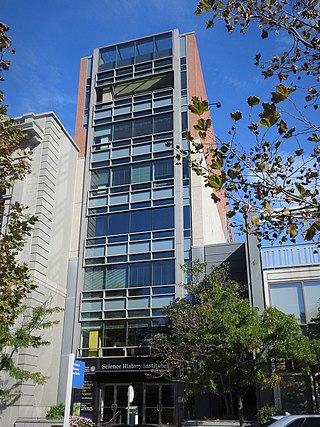
The Science History Institute is an institution that preserves and promotes understanding of the history of science. Located in Philadelphia, Pennsylvania, it includes a library, museum, archive, research center and conference center.

Harvard Hall is a Harvard University classroom building in Harvard Yard, Cambridge, Massachusetts.
Leers Weinzapfel Associates Architects, Inc. is the first women-owned firm in history to win the American Institute of Architects Architecture Firm Award in 2007. Founded by Andrea Leers and Jane Weinzapfel in 1982, the work of Leers Weinzapfel Associates is known for its design innovation and excellence in the public realm.
Andrea Leers is an American architect and educator. Together with Jane Weinzapfel, Leers created the Boston-based architecture firm Leers Weinzapfel Associates which was the first woman-owned firm to win the American Institute of Architects Architecture Firm Award in 2007. In 1991, she was elected to the American Institute of Architects College of Fellows.
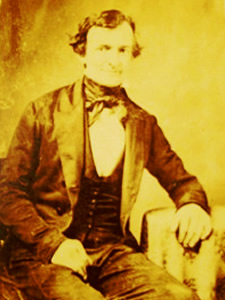
Benjamin Pike Jr. was a businessman and manufacturer of philosophical and optical instruments. He was the eldest son of Benjamin Pike Sr., whom he joined in business from 1831-1841 under the name Benjamin Pike & Son, before going on to create his own successful firm.
